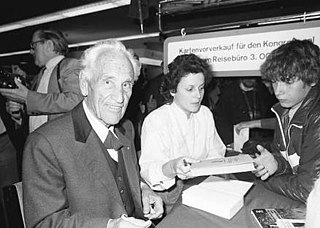
Luis Trenker was a South Tyrolean film producer, director, writer, actor, architect, alpinist, and bobsledder.
Speer und Er is a three-part German docudrama starring Sebastian Koch as Albert Speer and Tobias Moretti as Adolf Hitler. It mixes historical film material with reconstructions, as well as interviews with three of Speer's children, Albert Speer Jr., Arnold Speer and Hilde Schramm.
The Rudolf-Diesel-Medaille is an award by the German Institute for Inventions in memory of Rudolf Diesel for inventions and the entrepreneurial and economical implications accounting to the laureate. Since 1953 the award has been presented yearly until 1969 and then irregularly every two or three years.
Um das Menschenrecht is a 1934 Nazi propaganda film directed by Hans Zöberlein and Ludwig Schmid-Wildy.

The Last Year is a 1951 East German drama film directed by E.W. Fiedler and Hans Heinrich and starring Inge Keller, Hans Klering and Hermann Stövesand. It was made by the state-controlled DEFA in communist East Germany. Filming took place at the Johannisthal Studios in Berlin. The film's sets were designed by Wilhelm Depenau and Artur Günther.

The Rebel is a 1932 German historical drama film directed by Curtis Bernhardt, Edwin H. Knopf, and Luis Trenker and starring Trenker, Luise Ullrich, and Victor Varconi. The film's art direction was by Fritz Maurischat. It was made by the German subsidiary of Universal Pictures, with location shooting in Austria and St. Moritz, and Zuoz, Switzerland. Interior scenes were filmed at the Tempelhof Studios. A separate English language version, The Rebel, was released the following year. The film is part of the mountain film genre.
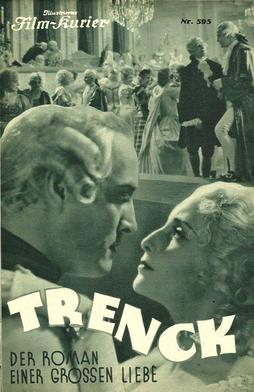
Trenck is a 1932 German historical film directed by Ernst Neubach and Heinz Paul starring Hans Stüwe, Dorothea Wieck, and Olga Chekhova. The film was based on a novel by Bruno Frank. It was shot at the Johannisthal Studios with sets designed by the art director Erich Czerwonski. It depicts the life of the Eighteenth century adventurer Friedrich von der Trenck.

Maria Ilona is a 1939 German historical drama film directed by Géza von Bolváry and starring Paula Wessely, Willy Birgel, and Paul Hörbiger. The film is set in Austria during the reign of Ferdinand I. It is an adaptation of Oswald Richter-Tersik's novel Ilona Beck.
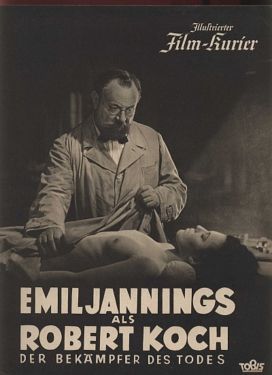
Robert Koch is a 1939 Nazi propaganda film directed by Hans Steinhoff and starring Emil Jannings, Werner Krauss and Viktoria von Ballasko. The film was a biopic of the German pioneering microbiologist Robert Koch (1843–1910). It was shot at the Johannisthal Studios in Berlin and premiered at the city's Ufa-Palast am Zoo. The film was made by the Tobis Film company, and was also distributed in the United States by the largest German studio UFA.
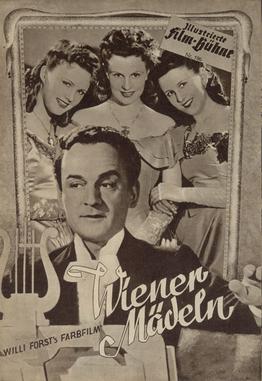
Viennese Girls is a 1945 historical musical film directed by Willi Forst and starring Forst, Anton Edthofer and Judith Holzmeister. The film was made by Wien-Film, a Vienna-based company set up after Austria had been incorporated into Greater Germany following the 1938 Anschluss. It was the third film in Forst's "Viennese Trilogy" which also included Operetta (1940) and Vienna Blood (1942). The film was finished in 1945, during the closing days of the Second World War. This led to severe delays in its release, which eventually took place in 1949 in two separate versions. One was released by the Soviet-backed Sovexport in the Eastern Bloc and the other by Forst.
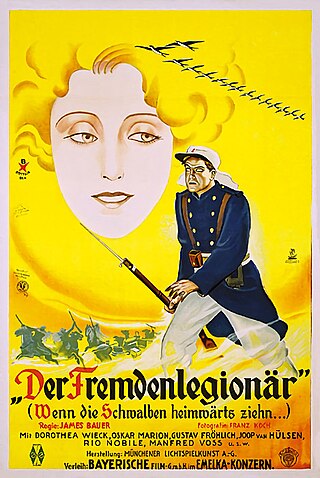
The Foreign Legionnaire is a 1928 German silent adventure film directed by James Bauer and starring Dorothea Wieck, Ferdinand Martini and Therese Giehse. It was made at the Emelka Studios in Munich. Location shooting took place in Spanish Morocco. The film's sets were designed by the art director Ludwig Reiber.

Two Bavarians in the Jungle is a 1957 West German comedy film directed by Ludwig Bender and starring Joe Stöckel, Beppo Brem and Lucie Englisch. It is a sequel to the 1956 hit Two Bavarians in St. Pauli.
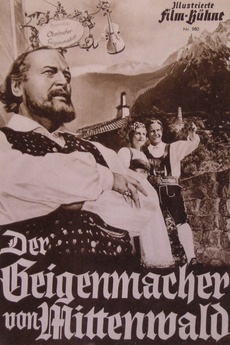
The Violin Maker of Mittenwald is a 1950 West German drama film directed by Rudolf Schündler and starring Willy Rösner, Paul Richter and Franziska Kinz.

Freight from Baltimore is a 1938 German drama film directed by Hans Hinrich and starring Hilde Weissner, Attila Hörbiger, and Hans Zesch-Ballot. Interiors were shot at the Tempelhof Studios in Berlin. The film's sets were designed by the art directors Carl Böhm and Erich Czerwonski. It was partly shot on location at the Port of Hamburg.











